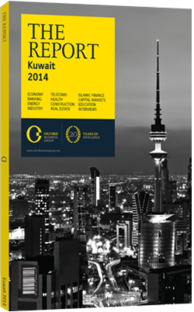The dearth of supply means many Kuwaitis are waiting for government housing to be constructed
The residential real estate sector has performed well in recent years, driven by a large undersupply of homes for Kuwaiti citizens, with the state’s growing population driving up demand and prices. The Public Authority for Housing and Welfare (PAHW) has rolled out ambitious plans for over 170,000 new affordable housing units, but with delays in housing delivery leading to a record backlog in housing applications, the residential segment is poised to witness sustained growth in the medium term.
Residential Pipeline
Residential sales continue to account for the largest segment of Kuwaiti real estate; sales rose 6% in 2013 to reach KD1.8bn ($6.3bn), despite the number of transactions dropping by 20% to 6325, as limited supply pushed prices higher. In terms of location, half of transactions were in Ahmadi Governorate, mostly in the Sabah Al Ahmed Sea-City, while the Mubarak Al Kabir Governorate accounted for 36%. Sales of land plots, as opposed to buildings, accounted for 57% of residential transactions in 2013. In February 2014, ratings agency Capital Standards reported the PAHW planned to deliver 925 residential units in the year, with residential cities expected to bolster these numbers.
According to Capital Standards, Jaber Al Ahmed residential city had delivered 4494 units as of early 2014, with 2185 planned for delivery by 2016. The North-west Sulaibiakhat Project has delivered 1030 units out of a planned 1736, while Abu Halifah has delivered 171 units. In March 2014, PAHW announced that it planned to deliver some 12,748 units in 2014/15, 12,000 units in 2015/16 and 9000 units in 2016/17, although a spate of delays and proposed parliamentary meetings about plans to establish a company that will develop these units means the PAHW could miss its targets. Demand continues to greatly exceed supply, and even the March 2013 announcement that the government plans to build an additional 174,000 affordable housing units by 2020 has done little to ease the short-term demand.
The Land Challenge
Land allocation is one of the primary challenges facing affordable housing development, with Kuwaitis’ preference for houses or villas located in low-density areas exacerbating these challenges and contributing to urban sprawl. In the past 50 years, Kuwait City’s footprint has expanded to accommodate the metro population, which grew from 320,000 in 1963 to 528,000 in 2013, a more rapid pace than many other fast-growing cities, including Shanghai and Mumbai.
With an average density of 4444 people per sq km, one-fifth of Mumbai’s average, urban sprawl is a growing concern. Residential zones comprise less than 10% of Kuwait’s area, with the majority of land belonging to the government. The lack of land has caused real estate prices to jump; a 2013 report by Al Shall Economic Consultants showed a 138% increase in residential real estate prices between 2000 and 2011. As a result, 1 sq metre of housing land can cost up to $1000, even in remote areas.
Private Financing
The housing shortage is expected to continue and the government is looking to relax lending restrictions to allow more private mortgages. The Savings and Credit Bank, renamed the Kuwait Credit Bank in January 2014, approved KD395m ($1.4bn) in loans in 2013 – the highest levels since 2002 and more than double 2012’s loans. Currently, only sharia-compliant institutions can provide mortgages, which were previously capped at 40 times the borrower’s monthly salary and a maximum of KD70,000 ($246,120). Residential transactions averaged KD293,500 ($1.03m) in 2013, meaning home ownership remained out of reach for many Kuwaitis. In December 2013 the government moved to raise the mortgage cap to KD100,000 ($351,600), but Capital Standards reported in June that it could be raised to KD500,000 ($1.76m) in the near term. Improved purchasing power would bolster residential real estate growth, despite ongoing shortages of affordable housing.
You have reached the limit of premium articles you can view for free.
Choose from the options below to purchase print or digital editions of our Reports. You can also purchase a website subscription giving you unlimited access to all of our Reports online for 12 months.
If you have already purchased this Report or have a website subscription, please login to continue.

